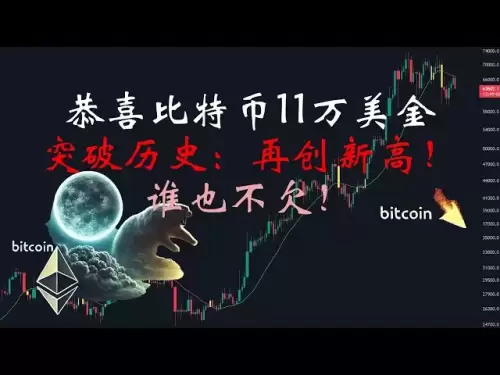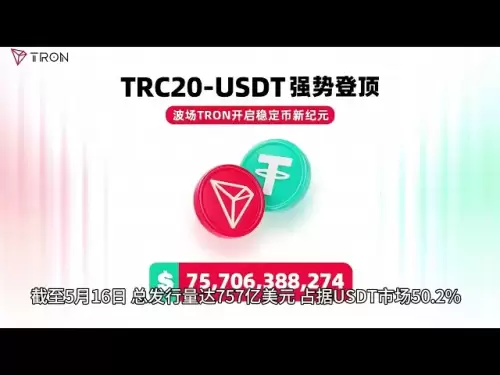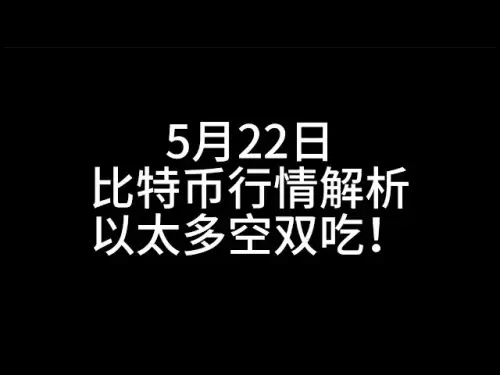-
 Bitcoin
Bitcoin $110,772.4196
4.15% -
 Ethereum
Ethereum $2,654.1868
4.93% -
 Tether USDt
Tether USDt $0.9999
-0.03% -
 XRP
XRP $2.4234
3.31% -
 BNB
BNB $683.9692
4.71% -
 Solana
Solana $178.3010
6.00% -
 USDC
USDC $0.9997
0.00% -
 Dogecoin
Dogecoin $0.2402
6.40% -
 Cardano
Cardano $0.7993
5.71% -
 TRON
TRON $0.2778
2.37% -
 Sui
Sui $4.0785
6.16% -
 Chainlink
Chainlink $16.5421
4.02% -
 Avalanche
Avalanche $24.9354
10.53% -
 Hyperliquid
Hyperliquid $31.1819
18.00% -
 Stellar
Stellar $0.3009
4.18% -
 Shiba Inu
Shiba Inu $0.0...01528
5.74% -
 Bitcoin Cash
Bitcoin Cash $436.5561
10.08% -
 Hedera
Hedera $0.2034
4.00% -
 UNUS SED LEO
UNUS SED LEO $8.8598
0.58% -
 Toncoin
Toncoin $3.1726
4.03% -
 Polkadot
Polkadot $4.8808
4.76% -
 Litecoin
Litecoin $98.6118
3.63% -
 Monero
Monero $404.1019
11.87% -
 Bitget Token
Bitget Token $5.3138
3.44% -
 Pepe
Pepe $0.0...01444
7.80% -
 Pi
Pi $0.8244
2.90% -
 Dai
Dai $0.9999
0.00% -
 Ethena USDe
Ethena USDe $1.0003
-0.03% -
 Bittensor
Bittensor $468.0346
12.86% -
 Uniswap
Uniswap $6.4345
3.81%
How to use VWAP indicator in combination with K-line? Is the golden cross and dead cross signal reliable?
VWAP, combined with K-line charts, helps traders analyze market trends and make informed decisions, while golden and dead crosses signal potential bullish or bearish movements.
May 22, 2025 at 11:01 am
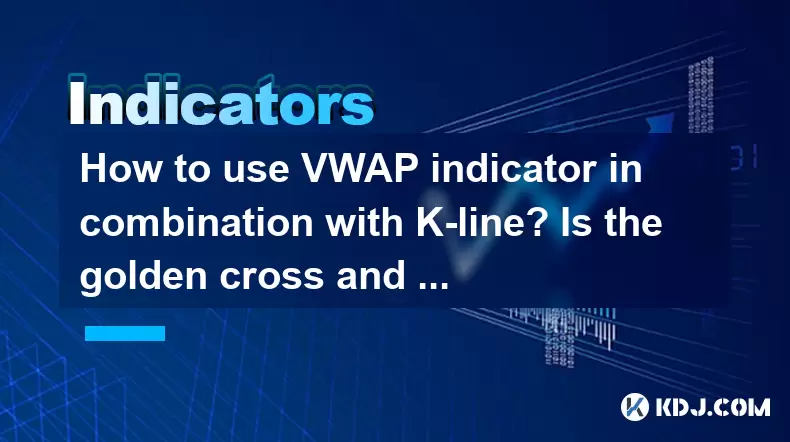
The Volume Weighted Average Price (VWAP) indicator is a popular tool among traders in the cryptocurrency market, used to measure the average price of a cryptocurrency weighted by the volume of trades. When combined with K-line charts, which represent price movements over time, traders can gain a deeper understanding of market trends and make more informed trading decisions. In this article, we will explore how to use the VWAP indicator in combination with K-line charts and discuss the reliability of golden cross and dead cross signals.
Understanding VWAP and K-line Charts
VWAP is calculated by taking the total dollar value of all trades and dividing it by the total trading volume for a given period. It provides a benchmark for traders to compare their trades against, helping them determine if they are getting a favorable price. The formula for VWAP is:
[ \text{VWAP} = \frac{\sum (P_i \times V_i)}{\sum V_i} ]
Where ( P_i ) is the price of the trade and ( V_i ) is the volume of the trade.
K-line charts, also known as candlestick charts, display the open, high, low, and close prices for a given time period. Each "candle" represents the price movement within that period, with the body of the candle showing the open and close prices and the wicks showing the high and low prices.
Using VWAP in Combination with K-line Charts
To effectively use VWAP in combination with K-line charts, follow these steps:
Set up your trading platform: Ensure that your trading platform supports both VWAP and K-line charts. Most popular platforms like TradingView, Binance, and Coinbase Pro offer these tools.
Select the appropriate timeframe: Choose a timeframe that aligns with your trading strategy. For short-term trading, you might opt for a 1-minute or 5-minute chart, while long-term traders might prefer a daily or weekly chart.
Plot the VWAP on the chart: Add the VWAP indicator to your K-line chart. The VWAP line will appear on the chart, typically as a blue line.
Analyze the relationship between VWAP and K-line: Observe how the K-line candles interact with the VWAP line. If the price is above the VWAP, it suggests bullish sentiment, while a price below the VWAP indicates bearish sentiment.
Identify trading opportunities: Look for instances where the K-line crosses the VWAP line. A bullish crossover occurs when the K-line moves from below to above the VWAP, signaling a potential buying opportunity. Conversely, a bearish crossover happens when the K-line moves from above to below the VWAP, indicating a potential selling opportunity.
Golden Cross and Dead Cross Signals
The golden cross and dead cross are technical indicators used to identify bullish and bearish market trends. They are based on the moving averages of a cryptocurrency's price.
Golden Cross: This occurs when a short-term moving average (e.g., 50-day) crosses above a long-term moving average (e.g., 200-day). It is considered a bullish signal, suggesting that the price may continue to rise.
Dead Cross: This happens when a short-term moving average crosses below a long-term moving average. It is seen as a bearish signal, indicating that the price may continue to fall.
Reliability of Golden Cross and Dead Cross Signals
The reliability of golden cross and dead cross signals can vary depending on market conditions and the specific cryptocurrency being traded. Here are some factors to consider:
Market Volatility: In highly volatile markets, these signals may generate more false positives, leading to less reliable trading decisions.
Timeframe: The reliability of these signals can vary depending on the timeframe used. Signals on longer timeframes tend to be more reliable than those on shorter timeframes.
Confirmation: It is often beneficial to use additional indicators or analysis to confirm the signals provided by the golden cross and dead cross. For example, combining these signals with VWAP and K-line analysis can provide a more comprehensive view of market trends.
Combining VWAP, K-line, and Moving Averages
To enhance your trading strategy, you can combine VWAP, K-line charts, and moving averages. Here's how:
Plot the moving averages: Add both the short-term and long-term moving averages to your K-line chart. For example, plot the 50-day and 200-day moving averages.
Monitor the VWAP and K-line: Continue to observe how the K-line interacts with the VWAP line, as described earlier.
Watch for golden and dead crosses: Keep an eye on the moving averages for potential golden and dead crosses. When a golden cross occurs, and the K-line is above the VWAP, it may reinforce a bullish signal. Conversely, a dead cross combined with the K-line below the VWAP could strengthen a bearish signal.
Confirm with additional analysis: Use other technical indicators, such as the Relative Strength Index (RSI) or the Moving Average Convergence Divergence (MACD), to confirm the signals provided by VWAP, K-line, and moving averages.
Practical Example of Using VWAP and K-line
Let's consider a practical example of how to use VWAP in combination with K-line charts for trading Bitcoin (BTC).
Scenario: You are observing the 1-hour chart of BTC/USD on TradingView. The VWAP is plotted on the chart, and you notice that the price is currently below the VWAP.
Observation: The K-line candles are showing a series of lower lows and lower highs, indicating a bearish trend. The price is consistently trading below the VWAP.
Action: You decide to wait for a bearish crossover, where the K-line moves from above to below the VWAP. Once this occurs, you enter a short position, expecting the price to continue falling.
Monitoring: You continue to monitor the chart, watching for signs that the bearish trend may be reversing. If the K-line crosses back above the VWAP, it could signal a potential exit point for your short position.
FAQs
Q: Can VWAP be used for all cryptocurrencies?
A: Yes, VWAP can be applied to any cryptocurrency that has sufficient trading volume. However, its effectiveness may vary depending on the liquidity and volatility of the specific cryptocurrency.
Q: How often should I recalculate the VWAP?
A: The VWAP is typically recalculated in real-time as new trades occur. Most trading platforms will automatically update the VWAP line on your chart. For manual calculations, you would need to recalculate it for each new time period you are analyzing.
Q: Are there any limitations to using the golden cross and dead cross signals?
A: Yes, one limitation is that these signals can be lagging indicators, meaning they may confirm a trend after it has already started. Additionally, in choppy or sideways markets, these signals can generate false positives, leading to potential losses.
Q: Can I use VWAP and K-line charts for long-term investment strategies?
A: While VWAP and K-line charts are often used for short-term trading, they can also be applied to long-term investment strategies. By using longer timeframes, such as daily or weekly charts, you can gain insights into broader market trends and make more informed long-term investment decisions.
Disclaimer:info@kdj.com
The information provided is not trading advice. kdj.com does not assume any responsibility for any investments made based on the information provided in this article. Cryptocurrencies are highly volatile and it is highly recommended that you invest with caution after thorough research!
If you believe that the content used on this website infringes your copyright, please contact us immediately (info@kdj.com) and we will delete it promptly.
- BONK Meme Coin Returns to Starting Point After Experiencing Back-and-Forth Price Action Throughout May
- 2025-05-22 18:30:12
- Bitcoin Prices Climb to All-Time High Above $111,650
- 2025-05-22 18:30:12
- Hong Kong takes the lead in formally passing stablecoin legislation, targeting the issuance of fiat-pegged stablecoins
- 2025-05-22 18:25:13
- Veteran Trader Peter Brandt Projects Bitcoin (BTC) Could Rally Up to 35% in August
- 2025-05-22 18:25:13
- Hacker mocks ZachXBT after Coinbase breach, swaps $42.5M BTC to ETH
- 2025-05-22 18:20:13
- Sangha Labs Secures $14M Equity Raise to Build New Bitcoin Mining Facility in West Texas
- 2025-05-22 18:20:13
Related knowledge
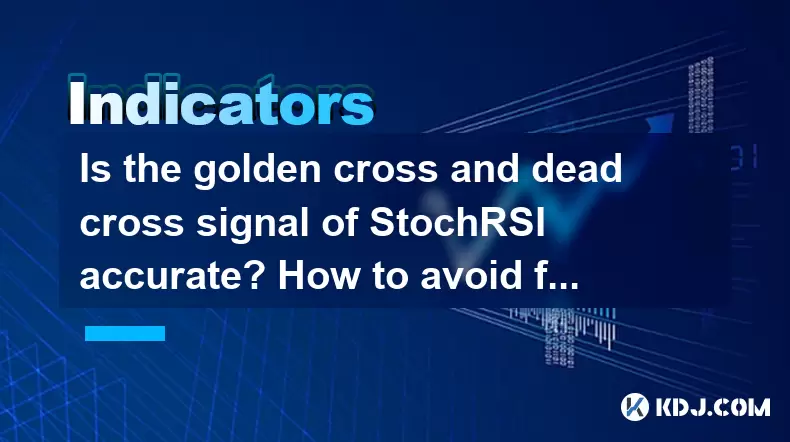
Is the golden cross and dead cross signal of StochRSI accurate? How to avoid false signal interference?
May 22,2025 at 06:49pm
The golden cross and dead cross signals generated by the Stochastic RSI (StochRSI) are popular tools used by traders within the cryptocurrency market to identify potential buy and sell opportunities. The StochRSI is a momentum oscillator that ranges between 0 and 1, and it's derived from the Relative Strength Index (RSI). Understanding the accuracy of t...
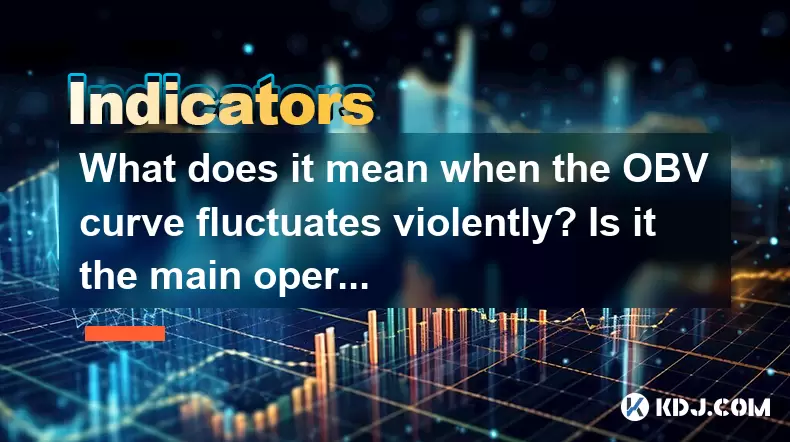
What does it mean when the OBV curve fluctuates violently? Is it the main operator or noise interference?
May 22,2025 at 03:57pm
The On-Balance Volume (OBV) indicator is a popular technical analysis tool used by traders and investors within the cryptocurrency market to predict price movements based on volume changes. When the OBV curve fluctuates violently, it raises questions about the underlying causes and the implications for trading strategies. In this article, we will explor...
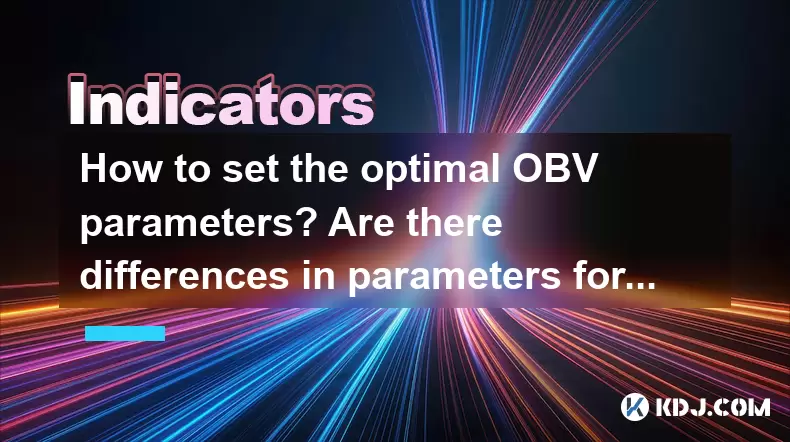
How to set the optimal OBV parameters? Are there differences in parameters for different cycles?
May 22,2025 at 04:21pm
The On-Balance Volume (OBV) indicator is a popular technical analysis tool used by cryptocurrency traders to predict price movements based on volume flow. Setting the optimal OBV parameters is crucial for maximizing the effectiveness of this indicator. This article will delve into how to set these parameters and whether they should be adjusted for diffe...
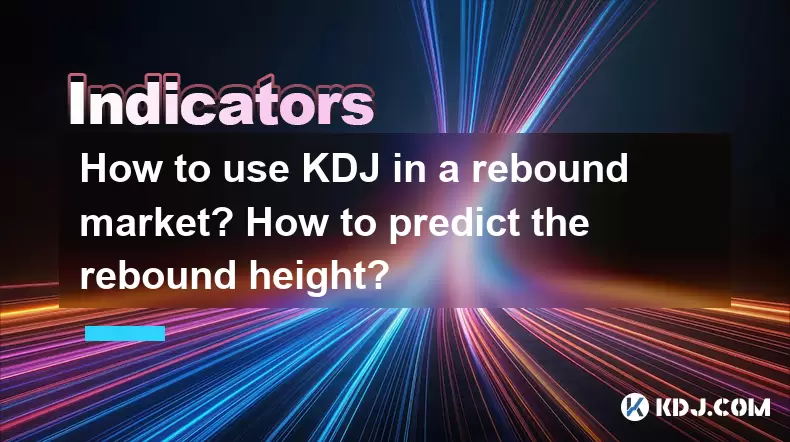
How to use KDJ in a rebound market? How to predict the rebound height?
May 22,2025 at 07:14pm
How to Use KDJ in a Rebound Market? How to Predict the Rebound Height? The KDJ indicator, also known as the Stochastic Oscillator, is a popular technical analysis tool used by traders to identify potential reversals in the market. In a rebound market, understanding how to effectively use the KDJ indicator can be crucial for making informed trading decis...
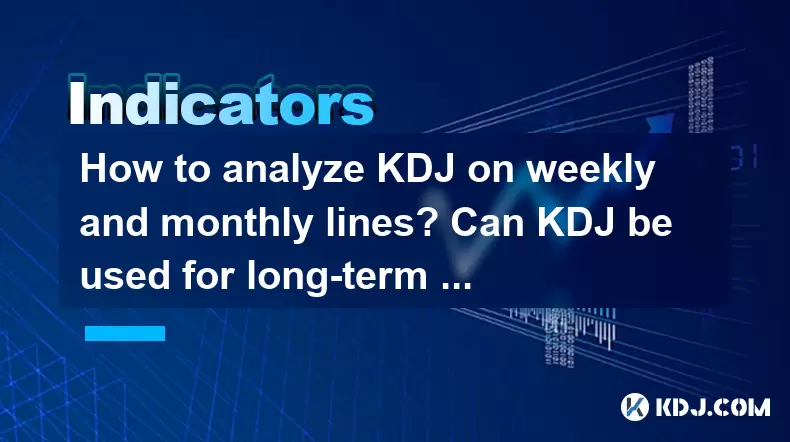
How to analyze KDJ on weekly and monthly lines? Can KDJ be used for long-term operations?
May 22,2025 at 02:21pm
Analyzing the KDJ indicator on weekly and monthly lines is a valuable skill for traders interested in long-term cryptocurrency operations. The KDJ, also known as the Stochastic Oscillator, is a momentum indicator that compares a closing price of a cryptocurrency to its price range over a certain period. By applying the KDJ to weekly and monthly timefram...
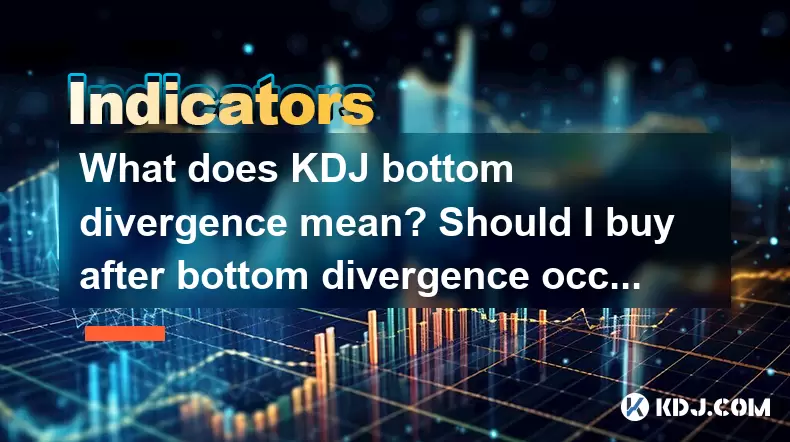
What does KDJ bottom divergence mean? Should I buy after bottom divergence occurs?
May 22,2025 at 07:21pm
What is KDJ Bottom Divergence?KDJ, or the Stochastic Oscillator, is a popular technical analysis tool used in the cryptocurrency market to predict price movements. It consists of three lines: K, D, and J, which are calculated based on the price momentum over a specific period. Bottom divergence in the context of KDJ occurs when the price of a cryptocurr...

Is the golden cross and dead cross signal of StochRSI accurate? How to avoid false signal interference?
May 22,2025 at 06:49pm
The golden cross and dead cross signals generated by the Stochastic RSI (StochRSI) are popular tools used by traders within the cryptocurrency market to identify potential buy and sell opportunities. The StochRSI is a momentum oscillator that ranges between 0 and 1, and it's derived from the Relative Strength Index (RSI). Understanding the accuracy of t...

What does it mean when the OBV curve fluctuates violently? Is it the main operator or noise interference?
May 22,2025 at 03:57pm
The On-Balance Volume (OBV) indicator is a popular technical analysis tool used by traders and investors within the cryptocurrency market to predict price movements based on volume changes. When the OBV curve fluctuates violently, it raises questions about the underlying causes and the implications for trading strategies. In this article, we will explor...

How to set the optimal OBV parameters? Are there differences in parameters for different cycles?
May 22,2025 at 04:21pm
The On-Balance Volume (OBV) indicator is a popular technical analysis tool used by cryptocurrency traders to predict price movements based on volume flow. Setting the optimal OBV parameters is crucial for maximizing the effectiveness of this indicator. This article will delve into how to set these parameters and whether they should be adjusted for diffe...

How to use KDJ in a rebound market? How to predict the rebound height?
May 22,2025 at 07:14pm
How to Use KDJ in a Rebound Market? How to Predict the Rebound Height? The KDJ indicator, also known as the Stochastic Oscillator, is a popular technical analysis tool used by traders to identify potential reversals in the market. In a rebound market, understanding how to effectively use the KDJ indicator can be crucial for making informed trading decis...

How to analyze KDJ on weekly and monthly lines? Can KDJ be used for long-term operations?
May 22,2025 at 02:21pm
Analyzing the KDJ indicator on weekly and monthly lines is a valuable skill for traders interested in long-term cryptocurrency operations. The KDJ, also known as the Stochastic Oscillator, is a momentum indicator that compares a closing price of a cryptocurrency to its price range over a certain period. By applying the KDJ to weekly and monthly timefram...

What does KDJ bottom divergence mean? Should I buy after bottom divergence occurs?
May 22,2025 at 07:21pm
What is KDJ Bottom Divergence?KDJ, or the Stochastic Oscillator, is a popular technical analysis tool used in the cryptocurrency market to predict price movements. It consists of three lines: K, D, and J, which are calculated based on the price momentum over a specific period. Bottom divergence in the context of KDJ occurs when the price of a cryptocurr...
See all articles























